Angelo Flaccavento needs no introduction. Considered by all to be one of the most influential voices in fashion criticism, Flaccavento is both a journalist and a curator, and a columnist for The Business of Fashion, Il Sole 24 Ore and D. In his first time as an artist, the exhibition "Le Avventure di Ubi M.” (The Adventures of Ubi M.) presents his drawings at the Marsèll Paradise gallery in Milan. Those who are used to reading him will recognise in these sketches the same narrative art and authentic humour that characterise his writings "The exhibition is the result of two years spent drawing," as Angelo Flaccavento himself revealed in this exclusive interview, telling us how he has rediscovered an old passion and, at the same time, a channel of freedom.
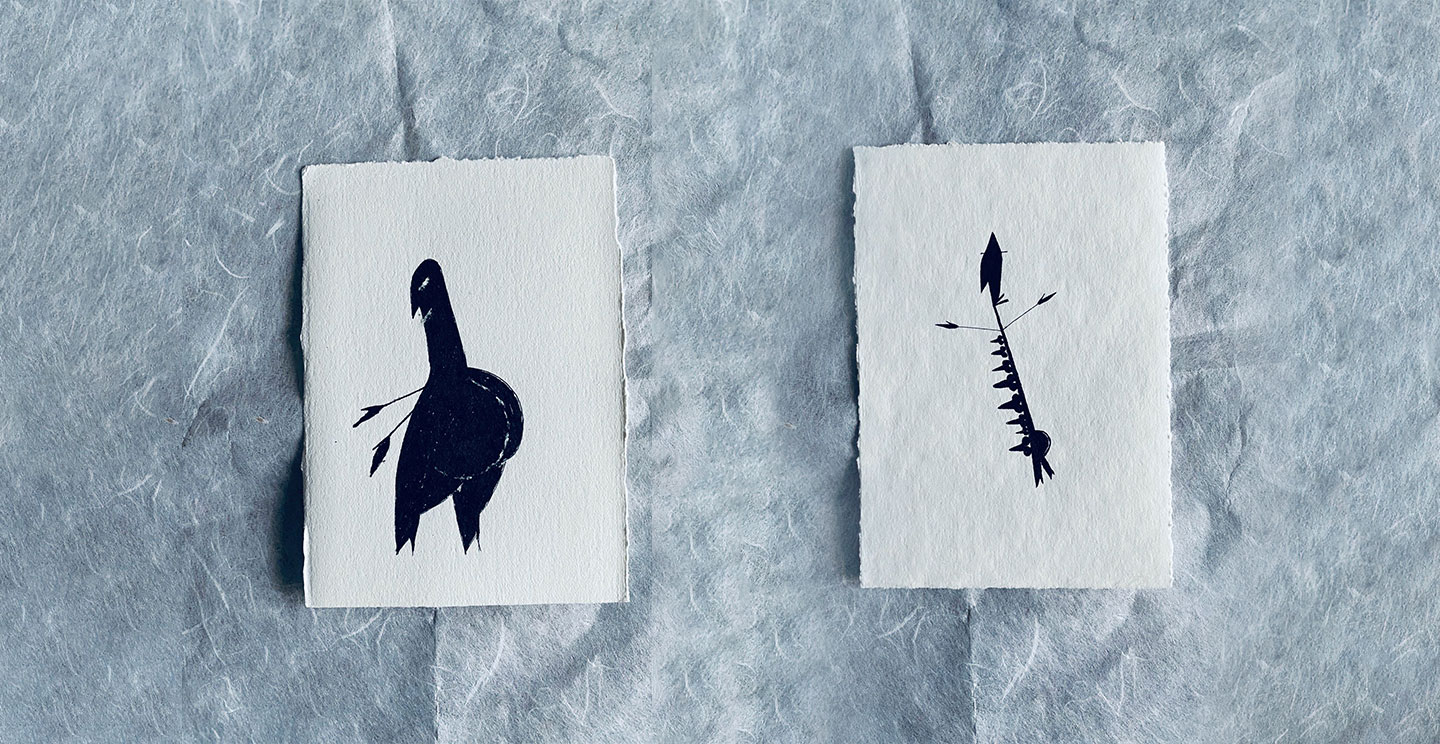
Sketches from “Le Avventure di Ubi M.”, Angelo Flaccavento’s first solo exhibition of drawings at Marsèll Paradise Space, Via privata Rezia 2, Milan
How was the project born?
The exhibition was born out of a WhatsApp notification from the Head of Communications and PR at Marsèll, an exhibition organisation with ties to the art world. However, I have always drawn in my life. In alternating waves, it has always been a spontaneous and inconstant activity. I could draw for 4 years at a time, then stop for 2 years and pick up right where I left off. The series on display represents the progressive work that began in March 2020, when the first lockdown began. However, this should not be interpreted as the result of boredom in quarantine. I had the desire to return to sketching, but the fashion weeks that were taking place at the time made this impossible. So, when I returned to Sicily expecting to stay a few days, I had two sheets of Fabriano paper sized 50x60 that I had cut into small pieces, a stylus and a bottle of India ink. Two days later, we were locked up, and then I began to draw, but mainly to conserve, without the idea of preparing material for an exhibition, but as a creative act that helped me a lot in that difficult time.
Who is Ubi M.? What common thread runs through his adventures?
He is the protagonist of the sketches. The name stands for the different spellings of U.B.M., meaning "una beata minchia" (a blessed dick), because the male gender is the protagonist in various forms, always playful and mocking. However, the title of the exhibition came at the end. I wanted to include the humorous component that characterises my literary activity. The drawings are conceived without a title; only afterwards do they become puns that create short circuits, electric shocks between the word and the illustration. The exhibition’s title opens with two precise words, “Le Avventure” (The Adventures) because the drawings have both a light and strong erotic theme. So, I wanted something that was not made explicit by the title but already mocked by it.
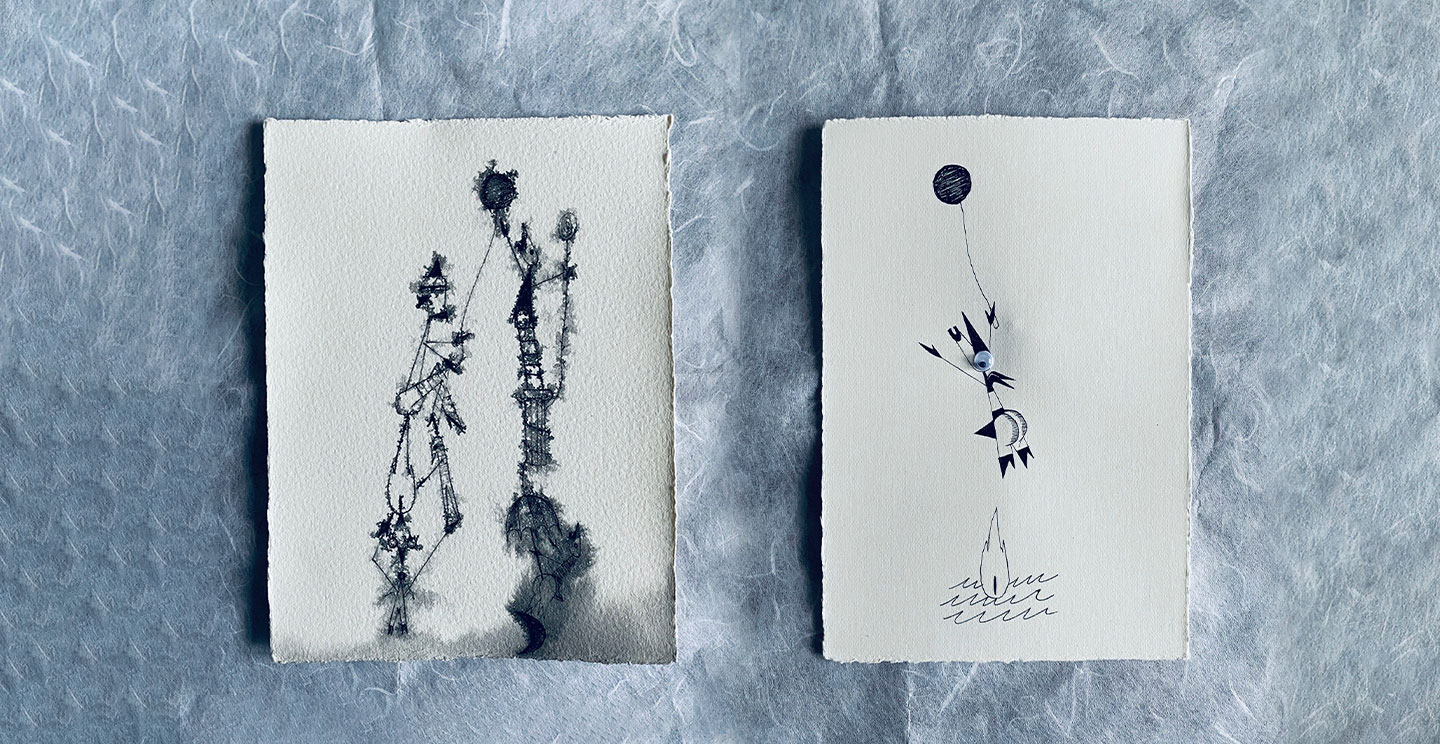
Sketches from “Le Avventure di Ubi M.”
Is the relationship between you and the protagonist a coincidence or a divergence?
Each of our works contains an autobiographical element, even an unconscious one. People often think that my artistic work is purely autobiographical, but the figures emerge from the deal with the blank page. They are not the representation of my psychosexual disorders or the projection of my desires but an expression of the playful side of my personality that many people do not perceive at first glance. The prints are tiny because I love the detail and the size of the small fragment. I have always been fascinated by activities such as marginalia in Mediaeval codex, where the monks would make a small promiscuous drawing alongside a courtly text.
To what extent does spontaneity play a role in your creative process?
It is fundamental. It is all about it. The associations I make between words and images, post and caption, are spontaneous. Overproduction is part of the process in this graphic game. There are about 300 drawings in this exhibition, but since March 2020, I have made more than 1500, not even two of which are alike. Every sketch is final. There are no preliminary drawings, and I never waste anything because, for me, drawing is like writing: I have a thought in my head, and then I put it on the page. My illustrations are created through an improvisation process that starts from the nose and then evolves into different forms.
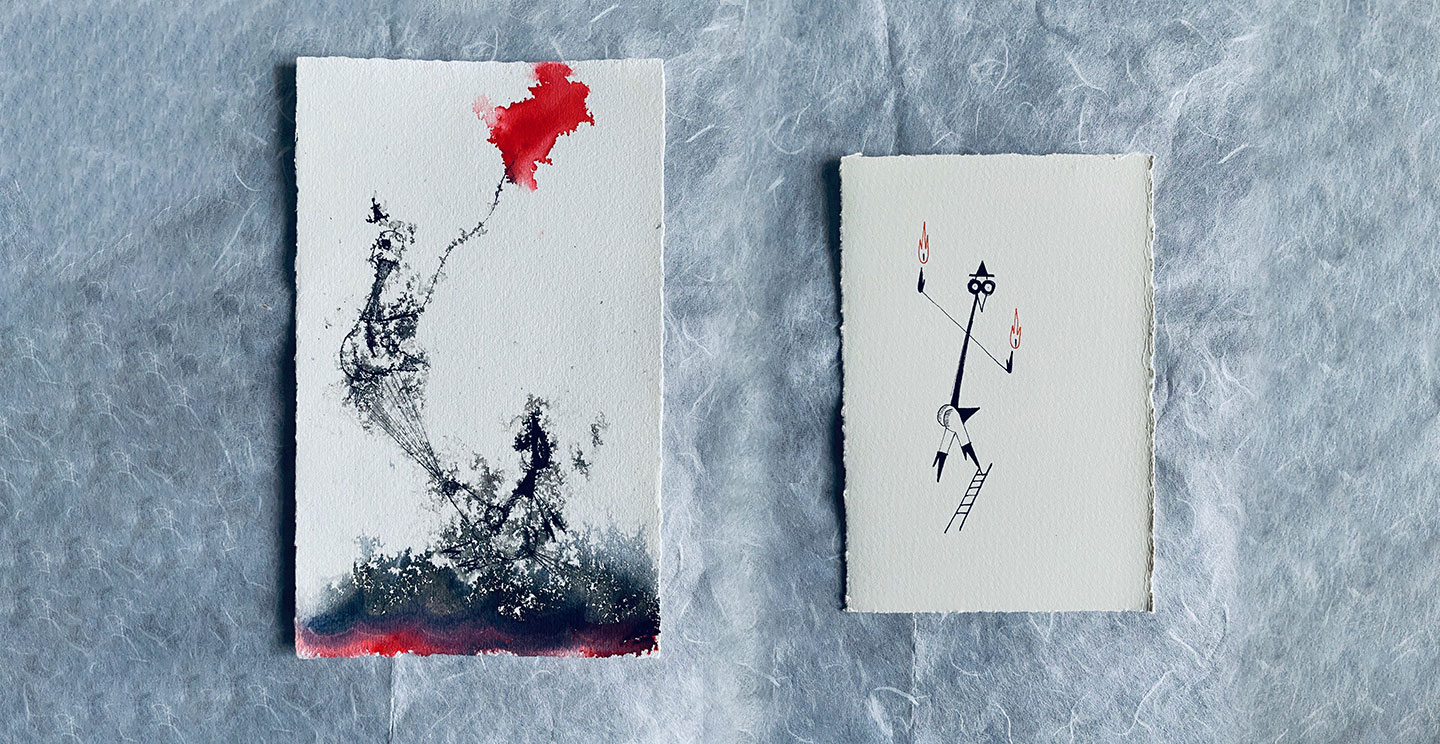
Sketches from “Le Avventure di Ubi M.”
On Instagram, your sketches are – almost – always placed on a book. Is there a complementary connection between them?
I preferred to make spontaneous associations between the illustration and the book I placed it on. They are all Adelphi books because I like the colours of the paper, the typeface used for the titles…. it's a kind of game. Initially, I had thought of using those books in the exhibition, but the idea of using the book as a base for the drawing faded over time.
What is decisive for the use and selection of materials?
The materials used are almost always the same. The most important is cotton paper, a strong and durable material that I use in different shades of white. If the base is always the same, the tools are there to change things. The other important element is the use of the nib. So, my ink drawings are created with the nib pen, which I dip into an inkwell of Japanese ink, with a capillary tip used in manga drawing for details such as hair and eyeballs. Then other techniques came along, such as Ecoline inks, a transparent dye-based watercolour that I use for backgrounds, which I then spray with water to make the drawings look like they have been burnt or eaten. Or I use ink-covered oil pastel or drypoint. I prefer a drypoint or nib for very sharp and thin lines.
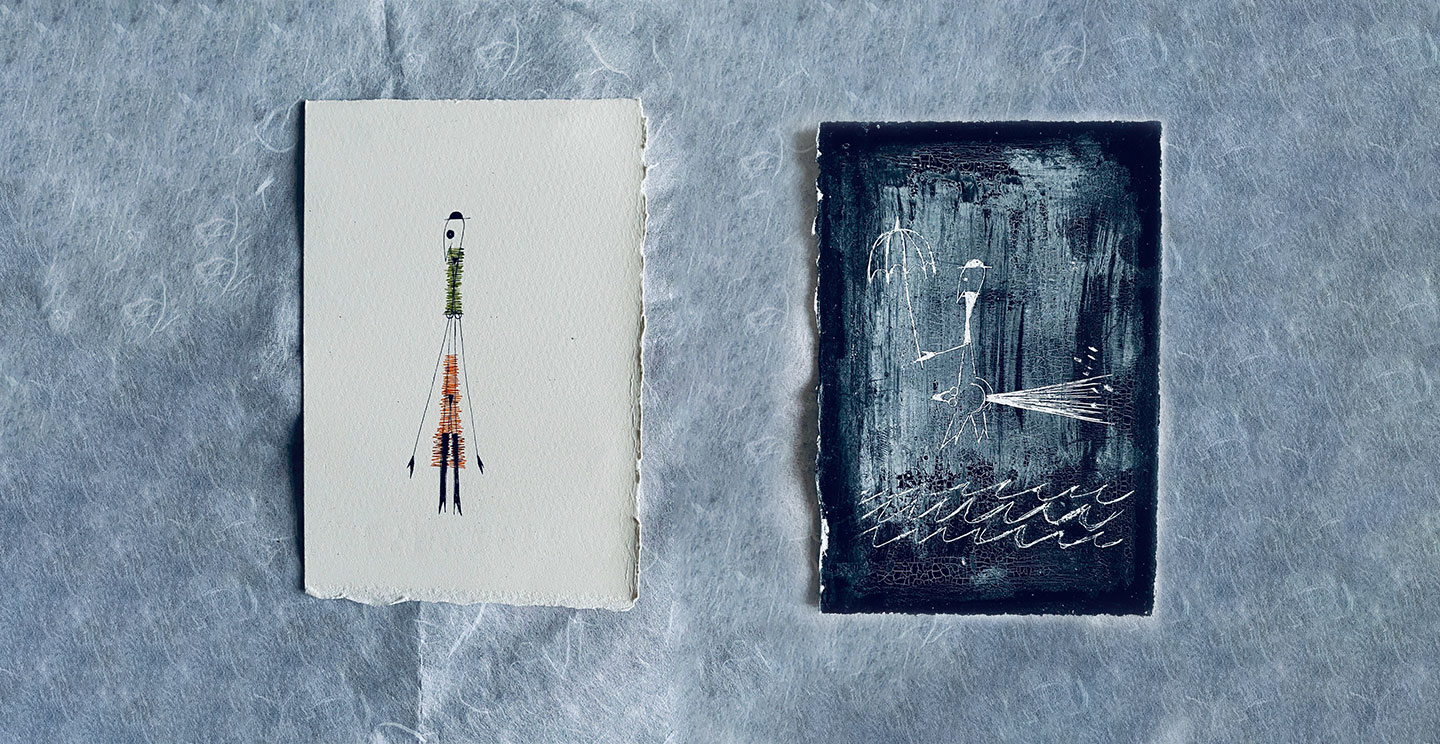
Sketches from “Le Avventure di Ubi M.”
Your strong sense of humour is also evident in your sketches. What does it mean to you?
Disillusionment is a typically Sicilian mocking way of looking at life. I want to make people smile, even when it comes to subjects that are natural but "taboo" in our culture today. The bodies and couples I depict are of all kinds, often artificial and monstrous by standards. There is a childlike element in the drawings that helps to lighten it all up. I leave it to everyone to interpret what I do as far as possible. I do not agree with those who see something perverse in my art. I think of it as a standard that we must meet. For this reason, the sphere of childhood seems totally appropriate to me because, in the world of children, there are no rules; they are imposed later by society.
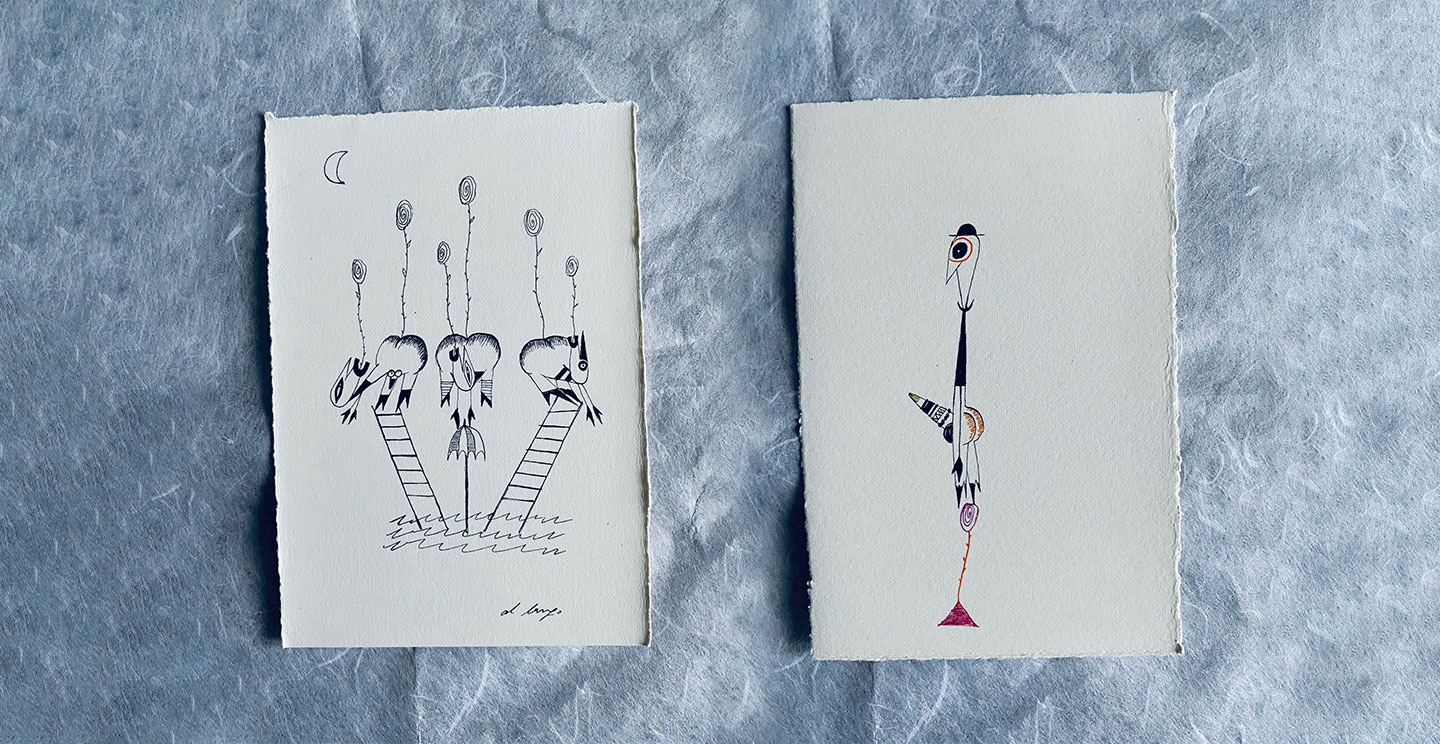
Sketches from “Le Avventure di Ubi M.”
Your works reveal carefree sexuality. However, in the fashion industry, the debate is still red-hot…
The subject of sexuality in fashion is explored in often exciting ways but with a strong market orientation as if to create new user groups deliberately. Although the work on genderlessness and what a man “can wear” is fascinating: the real break is in the male canon rather than the female one. Even though the female standard now includes bodies that deviate from previous rules, much more work is being done on men. Just think of Gucci or brands that have overtly adopted feminised elements in the male code. However, these movements are more fulfilling when they come spontaneously and from the grassroots. In the 70s, for instance, these things happened without having to follow the genderless label. As soon as you put the label on top, everything becomes too standardised, easy, and commercial. Fashion often tends to adapt certain things to their own use and consumption. This can be good because it expands specific parameters, but not so good because sometimes it takes away the inner spontaneity of expression.
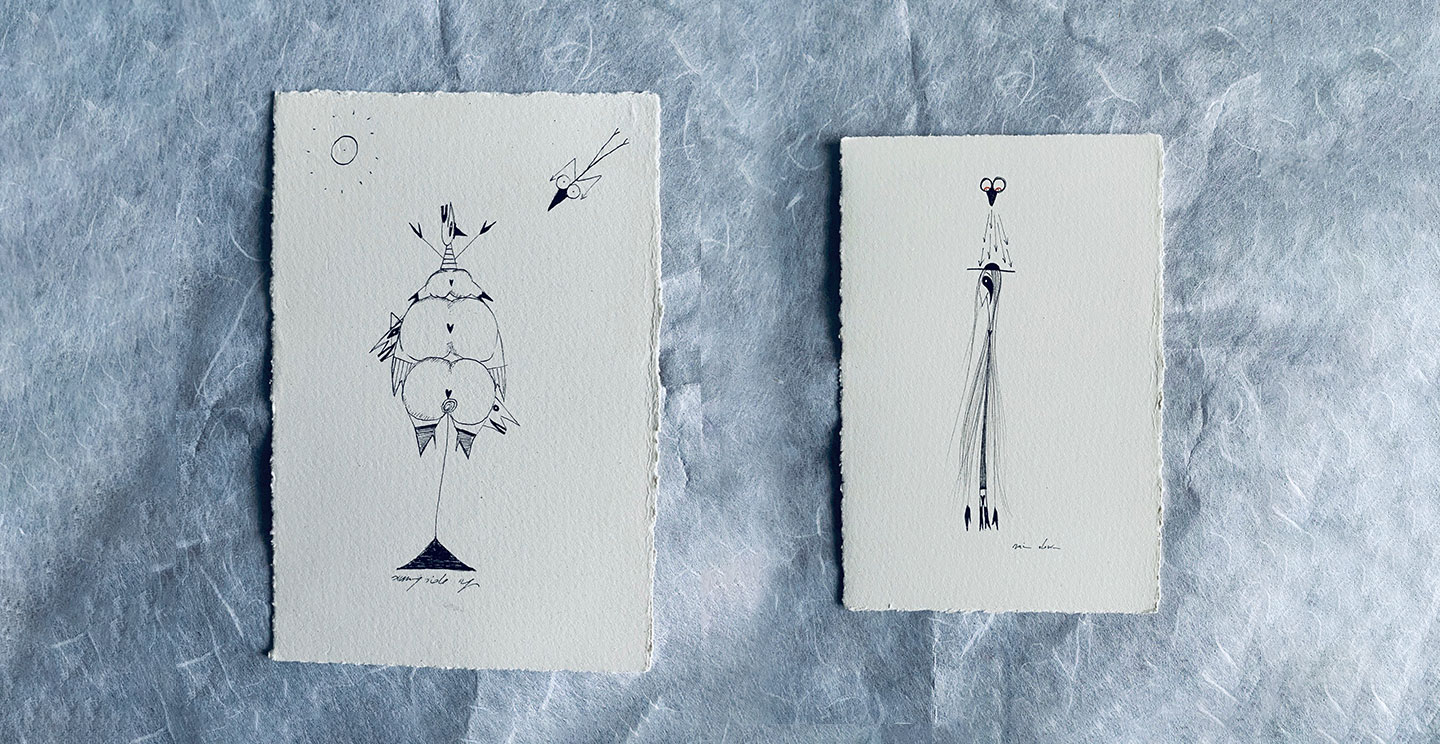
Sketches from “Le Avventure di Ubi M.”
From words to drawings, you seem to have a constant need to fill that "blank page". What are the differences between the two creative acts?
They are identical, but if writing is a struggle, drawing liberates. Personally, the so-called "fear of the blank page", which manifests itself in the idea of having to say something meaningful to the reader, can be very frustrating. In contrast, drawing is so automatic and spontaneous that it appears by itself. While the moment when the blank page stands in front of you is identical, the turning point is different.
How do you mix these two artistic practices?
If drawing is an act of free expression of my imagination, the pro-militant activity of fashion criticism is a purely intellectual analysis of what I observe. I consider them different activities since drawing is an urge that needs a certain mental serenity to express itself, some kind of stability far from the loops of the fashion months. However, the two activities sometimes get mixed because I use my drawings to support my writing, as I did in the Controcanto column for Vogue Italia. I often ask independent magazines to use drawings and words because I like my sketches to support my verses.
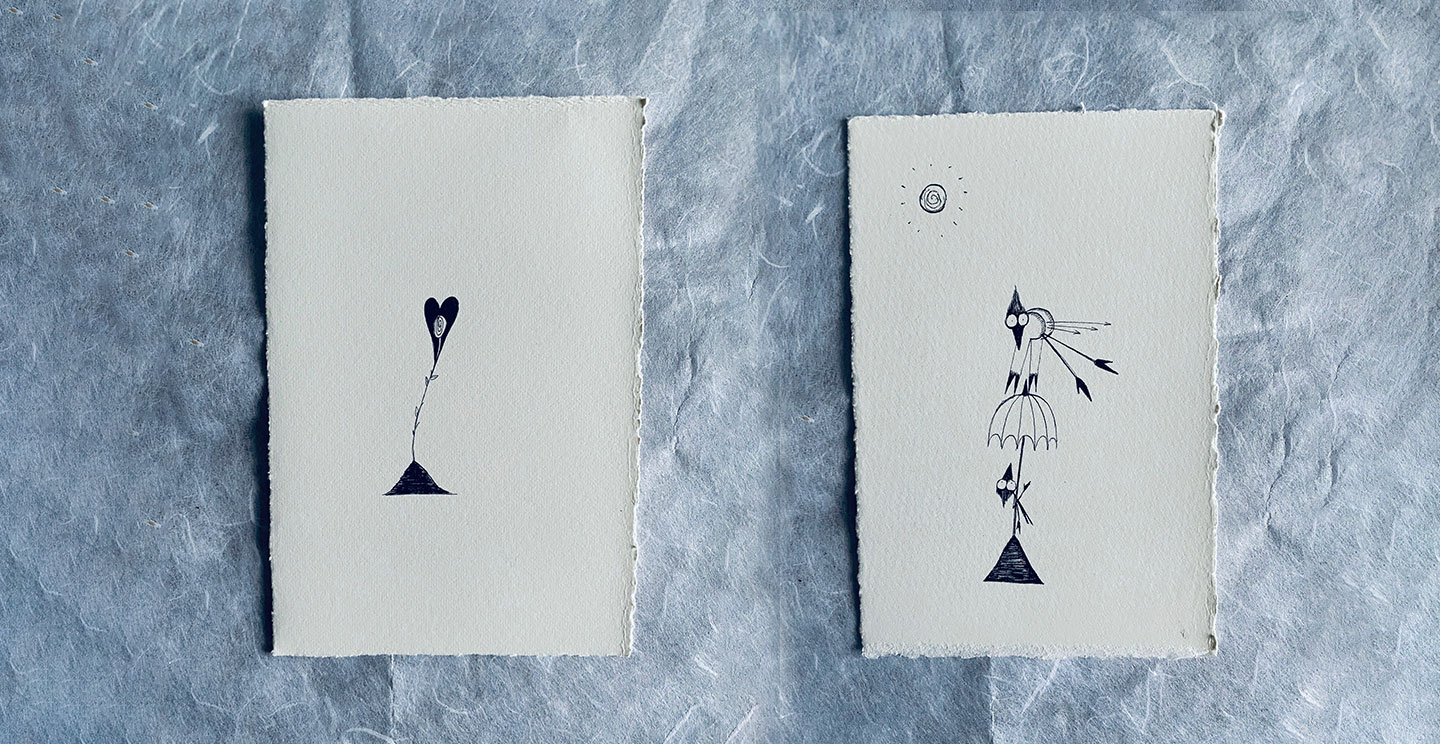
Sketches from “Le Avventure di Ubi M.”
What is the role of the viewer in your exhibition?
The beholder is the filter. I want everyone to see what is in front of them as they wish, they can also have a rejection or non-understanding, but I do not want to give them the key to interpretation. This aspect is also essential in my practice as a critic. The biggest misconception about what I write is that it is a reading "from my point of view". I offer the reading material that I have filtered through my perspective. The reader may also have a completely different opinion and disagree with what I have written. I would like the article to also be the beginning of an intellectual dialogue that is not verbal but offers a series of hints that the reader can then overturn the way they want to.
Tell us about your plans as a graphic artist...
In the short term, I have no plans. I just want to see what happens from now on. I am open to everything; I am aware this could be my first and last exhibition or a one-off. I’ll continue to work on my sketches, not least because I have received great feedback from the public on these illustrations. They are miniatures that can evoke huge reactions, such as smiles, excitement or someone feeling transported to a dimension of dream and lightness. This wide range of emotions is worth exploring.
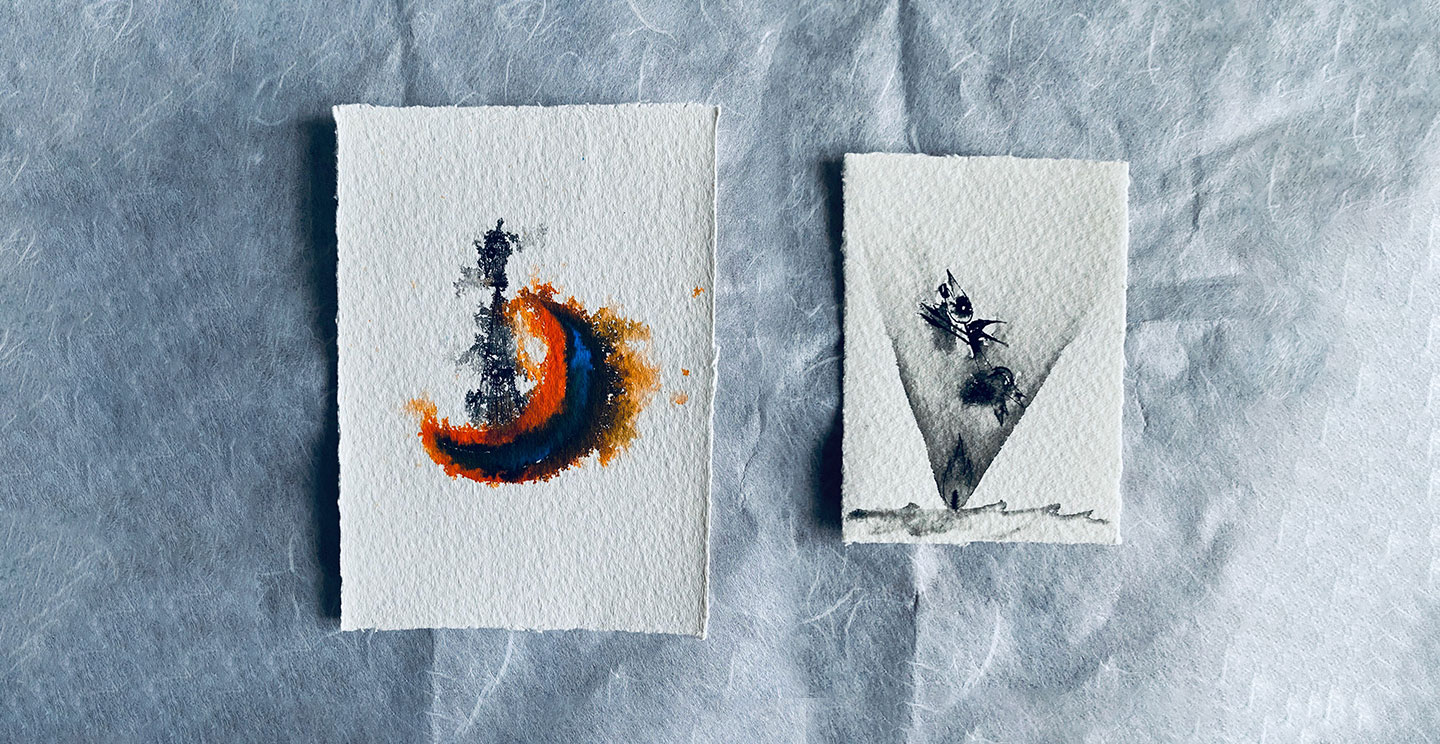
Sketches from “Le Avventure di Ubi M.”
Let us end, as if by magic, with the theme of disappearance. What does it mean to you?
I am particularly attracted to the theme of disappearance. There are some drawings that I make dry that I have not been able to exhibit because they are hard to see. There are drawings that I make with a drypoint, a metal tool for engraving zinc plates. It's like a pencil but highly problematic, razor-sharp and capillary; it's kind of scary. In this exhibition, there are white-on-white drawings where I use optical white ink on a butter white sheet; you can barely see them, which is a crucial element for me. My Instagram account (@poeticallypunk) has become a gallery of drawings over the last two years, but if you scroll down, you rarely see me and can’t figure out what kind of job I do. I have always wanted to separate my work in fashion from my social media account because I do not want my Ig channel as a diary of my life as a fashion journalist travelling to glamorous events everywhere. It's a job I love and am passionate about every day, but it does not define my lifestyle. The luxury hotels and the business trips are fantastic, but it's a kind of “borrowed” lifestyle that I would not personally want to show off; the social dynamic is that you draw conclusions from what you read and see, and they are almost always wrong. I'm also not interested in becoming a fashion critic on Instagram; many people suggest I do it, but I don't think it’s the right medium. I am for the traditional article, both online and printed. "Being there in a light way." The most beautiful thing about the exhibition is that the drawings are so small that you must get close to the displays to see the details, just like my writing: it can be a quick or an in-depth reading, but I know it always takes a second or third reading to see all the shades. It also takes time and closeness. And the intimacy that comes out of that is something special.
Sofia Sarandrea
Fashion Business, Digital Communication and New Media, 2nd year, Milan
The exhibition is on until April 6th, 2022 at Marsèll Paradise Space, 2, Via Privata Rezia, Milan.

